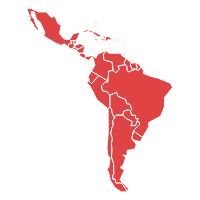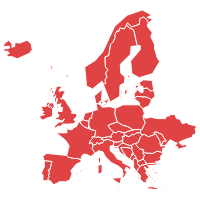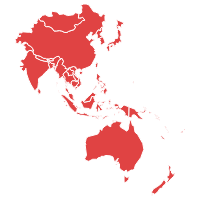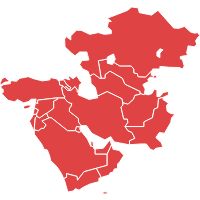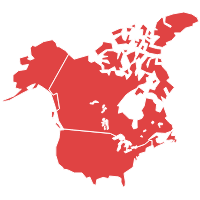- Natural
- Artificial
Food Antioxidants Market size was valued at USD 1.64 billion in 2023 and expected to reach USD 2.09 billion by 2030, at a CAGR of 6.2% from 2024-2030. Food Antioxidants Market: Antioxidants play a vital role in human health. These are natural compounds found in some foods which enable neutralize the free radicals present in the body. Free radicals attack protein, fats, and DNA in our cells, which may cause various types of diseases and accelerate the process of aging. Nowadays, natural antioxidants are gaining more popularity in developed countries and as well as developing countries due to their high efficacy and low toxicity. Antioxidants which are obtained from the rosemary contribute more to the market growth. As it is natural and it will have minimal adverse effects. Market players are focused on natural antioxidants over synthetic products to ensure their existence in the competition of the food antioxidants market. Global anti-oxidant producers are concentrating on providing customized antioxidants as per the requirements of consumers. Market players are being focused on the organic and inorganic growth of their companies by adopting growth strategies like product launches, acquisitions, mergers, etc.
Global Food Antioxidants Market Summary
Study Period
2024-2030
Base Year
2023
CAGR
6.2%
Largest Market
North America
Fastest Growing Market
Asia pacific
Food Antioxidants Market Dynamics
Increase in consumption of processed food along with the rising population pool is the major driving factors which are fueling the growth of the food antioxidants market. Furthermore, increase in the purchasing power of the customers, longer shelf life of the processed food, growing demand for the antioxidant foods is expected to boost the growth of food antioxidants market. In addition to this, rising awareness regarding health concerns and benefits of antioxidants, increase in consumption of confectionery foods, beverages expected to accelerate the growth of the food antioxidants market globally. On the other hand, high costs of the products, lack of awareness about the anti-oxidants usage, stringent regulatory framework are restrained of the food antioxidants market.
Key Features of the Reports
- The report provides granular level information about the market size, regional market share, historic market (2019-2023), and forecast (2024-2030)
- The report covers in-detail insights about the competitor's overview, company share analysis, key market developments, and their key strategies
- The report outlines drivers, restraints, unmet needs, and trends that are currently affecting the market
- The report tracks recent innovations, key developments, and start-up details that are actively working in the market
- The report provides a plethora of information about market entry strategies, regulatory framework, and reimbursement scenario

Global Food Antioxidants Market Segmentation
By Origin
By Source
- Oils
- Fruits and vegetables
- Nuts and seeds
- Spices and herbs
- Flowers and leaves
By Products
- Vitamin C
- Vitamin E
- Beta Carotene
- Glutathione
- Polyphenols
- Others
By Application
- Confectionary
- Diary and frozen products
- Canned food
- Meat and poultry products
- Beverages
By Form
- Liquid
- Dry
Frequently Asked Questions
The food antioxidants market size was valued at USD 1.64 billion in 2023
The food antioxidants market key players are: Koninklijke DSM N.V. (Netherlands) BASF SE (Germany) Eastman Chemical Company (U.S.) Archer Daniels Midland Company (U.S.) Kemin Industries, Inc. (U.S.) E.I. Du Pont De Nemours and Company (U.S.) Frutarom, Ltd (Israel) Barentz Group (Netherlands) PureCircle (Malaysia) Sunup (U.S) Kalsec, Inc. (U.S) Camlin Fine Sciences, Ltd. (India)
The food antioxidants market has been classified into North America, Asia Pacific, Europe, Latin America, Middle East and Africa, and the rest of MEA.
| 1.Executive Summary |
| 2.Global Food Antioxidants Market Introduction |
| 2.1.Global Food Antioxidants Market - Taxonomy |
| 2.2.Global Food Antioxidants Market - Definitions |
| 2.2.1.Origin |
| 2.2.2.Source |
| 2.2.3.Products |
| 2.2.4.Application |
| 2.2.5.Region |
| 3.Global Food Antioxidants Market Dynamics |
| 3.1. Drivers |
| 3.2. Restraints |
| 3.3. Opportunities/Unmet Needs of the Market |
| 3.4. Trends |
| 3.5. Product Landscape |
| 3.6. New Product Launches |
| 3.7. Impact of COVID 19 on Market |
| 4. Global Food Antioxidants Market Analysis, 2019 - 2023 and Forecast 2024 - 2030 |
| 4.1. Market Analysis, 2019 - 2023 and Forecast, 2024 - 2030, (Sales Value USD Million) |
| 4.2. Year-Over-Year (Y-o-Y) Growth Analysis (%) |
| 4.3. Market Opportunity Analysis |
| 5.Global Food Antioxidants Market By Origin, 2019 - 2023 and Forecast 2024 - 2030 (Sales Value USD Million) |
| 5.1. Natural |
| 5.1.1. Market Analysis, 2019 - 2023 and Forecast, 2024 - 2030, (Sales Value USD Million) |
| 5.1.2. Year-Over-Year (Y-o-Y) Growth Analysis (%) and Market Share Analysis (%) |
| 5.1.3. Market Opportunity Analysis |
| 5.2. Artificial |
| 5.2.1. Market Analysis, 2019 - 2023 and Forecast, 2024 - 2030, (Sales Value USD Million) |
| 5.2.2. Year-Over-Year (Y-o-Y) Growth Analysis (%) and Market Share Analysis (%) |
| 5.2.3. Market Opportunity Analysis |
| 6.Global Food Antioxidants Market By Source, 2019 - 2023 and Forecast 2024 - 2030 (Sales Value USD Million) |
| 6.1. Oils |
| 6.1.1. Market Analysis, 2019 - 2023 and Forecast, 2024 - 2030, (Sales Value USD Million) |
| 6.1.2. Year-Over-Year (Y-o-Y) Growth Analysis (%) and Market Share Analysis (%) |
| 6.1.3. Market Opportunity Analysis |
| 6.2. Fruits and vegetables |
| 6.2.1. Market Analysis, 2019 - 2023 and Forecast, 2024 - 2030, (Sales Value USD Million) |
| 6.2.2. Year-Over-Year (Y-o-Y) Growth Analysis (%) and Market Share Analysis (%) |
| 6.2.3. Market Opportunity Analysis |
| 6.3. Nuts and seeds |
| 6.3.1. Market Analysis, 2019 - 2023 and Forecast, 2024 - 2030, (Sales Value USD Million) |
| 6.3.2. Year-Over-Year (Y-o-Y) Growth Analysis (%) and Market Share Analysis (%) |
| 6.3.3. Market Opportunity Analysis |
| 6.4. Spices and herbs |
| 6.4.1. Market Analysis, 2019 - 2023 and Forecast, 2024 - 2030, (Sales Value USD Million) |
| 6.4.2. Year-Over-Year (Y-o-Y) Growth Analysis (%) and Market Share Analysis (%) |
| 6.4.3. Market Opportunity Analysis |
| 6.5. Flowers and leaves |
| 6.5.1. Market Analysis, 2019 - 2023 and Forecast, 2024 - 2030, (Sales Value USD Million) |
| 6.5.2. Year-Over-Year (Y-o-Y) Growth Analysis (%) and Market Share Analysis (%) |
| 6.5.3. Market Opportunity Analysis |
| 7.Global Food Antioxidants Market By Products, 2019 - 2023 and Forecast 2024 - 2030 (Sales Value USD Million) |
| 7.1. Vitamin C |
| 7.1.1. Market Analysis, 2019 - 2023 and Forecast, 2024 - 2030, (Sales Value USD Million) |
| 7.1.2. Year-Over-Year (Y-o-Y) Growth Analysis (%) and Market Share Analysis (%) |
| 7.1.3. Market Opportunity Analysis |
| 7.2. Vitamin E |
| 7.2.1. Market Analysis, 2019 - 2023 and Forecast, 2024 - 2030, (Sales Value USD Million) |
| 7.2.2. Year-Over-Year (Y-o-Y) Growth Analysis (%) and Market Share Analysis (%) |
| 7.2.3. Market Opportunity Analysis |
| 7.3. Beta Carotene |
| 7.3.1. Market Analysis, 2019 - 2023 and Forecast, 2024 - 2030, (Sales Value USD Million) |
| 7.3.2. Year-Over-Year (Y-o-Y) Growth Analysis (%) and Market Share Analysis (%) |
| 7.3.3. Market Opportunity Analysis |
| 7.4. Glutathione |
| 7.4.1. Market Analysis, 2019 - 2023 and Forecast, 2024 - 2030, (Sales Value USD Million) |
| 7.4.2. Year-Over-Year (Y-o-Y) Growth Analysis (%) and Market Share Analysis (%) |
| 7.4.3. Market Opportunity Analysis |
| 7.5. Polyphenols |
| 7.5.1. Market Analysis, 2019 - 2023 and Forecast, 2024 - 2030, (Sales Value USD Million) |
| 7.5.2. Year-Over-Year (Y-o-Y) Growth Analysis (%) and Market Share Analysis (%) |
| 7.5.3. Market Opportunity Analysis |
| 7.6. Others |
| 7.6.1. Market Analysis, 2019 - 2023 and Forecast, 2024 - 2030, (Sales Value USD Million) |
| 7.6.2. Year-Over-Year (Y-o-Y) Growth Analysis (%) and Market Share Analysis (%) |
| 7.6.3. Market Opportunity Analysis |
| 8.Global Food Antioxidants Market By Application, 2019 - 2023 and Forecast 2024 - 2030 (Sales Value USD Million) |
| 8.1. Confectionary |
| 8.1.1. Market Analysis, 2019 - 2023 and Forecast, 2024 - 2030, (Sales Value USD Million) |
| 8.1.2. Year-Over-Year (Y-o-Y) Growth Analysis (%) and Market Share Analysis (%) |
| 8.1.3. Market Opportunity Analysis |
| 8.2. Diary and frozen products |
| 8.2.1. Market Analysis, 2019 - 2023 and Forecast, 2024 - 2030, (Sales Value USD Million) |
| 8.2.2. Year-Over-Year (Y-o-Y) Growth Analysis (%) and Market Share Analysis (%) |
| 8.2.3. Market Opportunity Analysis |
| 8.3. Canned food |
| 8.3.1. Market Analysis, 2019 - 2023 and Forecast, 2024 - 2030, (Sales Value USD Million) |
| 8.3.2. Year-Over-Year (Y-o-Y) Growth Analysis (%) and Market Share Analysis (%) |
| 8.3.3. Market Opportunity Analysis |
| 8.4. Meat and poultry products |
| 8.4.1. Market Analysis, 2019 - 2023 and Forecast, 2024 - 2030, (Sales Value USD Million) |
| 8.4.2. Year-Over-Year (Y-o-Y) Growth Analysis (%) and Market Share Analysis (%) |
| 8.4.3. Market Opportunity Analysis |
| 8.5. Beverages |
| 8.5.1. Market Analysis, 2019 - 2023 and Forecast, 2024 - 2030, (Sales Value USD Million) |
| 8.5.2. Year-Over-Year (Y-o-Y) Growth Analysis (%) and Market Share Analysis (%) |
| 8.5.3. Market Opportunity Analysis |
| 9.Global Food Antioxidants Market By Region, 2019 - 2023 and Forecast 2024 - 2030 (Sales Value USD Million) |
| 9.1. North America |
| 9.1.1. Market Analysis, 2019 - 2023 and Forecast, 2024 - 2030, (Sales Value USD Million) |
| 9.1.2. Year-Over-Year (Y-o-Y) Growth Analysis (%) and Market Share Analysis (%) |
| 9.1.3. Market Opportunity Analysis |
| 9.2. Europe |
| 9.2.1. Market Analysis, 2019 - 2023 and Forecast, 2024 - 2030, (Sales Value USD Million) |
| 9.2.2. Year-Over-Year (Y-o-Y) Growth Analysis (%) and Market Share Analysis (%) |
| 9.2.3. Market Opportunity Analysis |
| 9.3. Asia Pacific (APAC) |
| 9.3.1. Market Analysis, 2019 - 2023 and Forecast, 2024 - 2030, (Sales Value USD Million) |
| 9.3.2. Year-Over-Year (Y-o-Y) Growth Analysis (%) and Market Share Analysis (%) |
| 9.3.3. Market Opportunity Analysis |
| 9.4. Middle East and Africa (MEA) |
| 9.4.1. Market Analysis, 2019 - 2023 and Forecast, 2024 - 2030, (Sales Value USD Million) |
| 9.4.2. Year-Over-Year (Y-o-Y) Growth Analysis (%) and Market Share Analysis (%) |
| 9.4.3. Market Opportunity Analysis |
| 9.5. Latin America |
| 9.5.1. Market Analysis, 2019 - 2023 and Forecast, 2024 - 2030, (Sales Value USD Million) |
| 9.5.2. Year-Over-Year (Y-o-Y) Growth Analysis (%) and Market Share Analysis (%) |
| 9.5.3. Market Opportunity Analysis |
| 10.North America Food Antioxidants Market ,2019 - 2023 and Forecast 2024 - 2030 (Sales Value USD Million) |
| 10.1. Origin Analysis 2019 - 2023 and Forecast 2024 - 2030 by Sales Value USD Million, Y-o-Y Growth (%), and Market Share (%) |
| 10.1.1.Natural |
| 10.1.2.Artificial |
| 10.2. Source Analysis 2019 - 2023 and Forecast 2024 - 2030 by Sales Value USD Million, Y-o-Y Growth (%), and Market Share (%) |
| 10.2.1.Oils |
| 10.2.2.Fruits and vegetables |
| 10.2.3.Nuts and seeds |
| 10.2.4.Spices and herbs |
| 10.2.5.Flowers and leaves |
| 10.3. Products Analysis 2019 - 2023 and Forecast 2024 - 2030 by Sales Value USD Million, Y-o-Y Growth (%), and Market Share (%) |
| 10.3.1.Vitamin C |
| 10.3.2.Vitamin E |
| 10.3.3.Beta Carotene |
| 10.3.4.Glutathione |
| 10.3.5.Polyphenols |
| 10.3.6.Others |
| 10.4. Application Analysis 2019 - 2023 and Forecast 2024 - 2030 by Sales Value USD Million, Y-o-Y Growth (%), and Market Share (%) |
| 10.4.1.Confectionary |
| 10.4.2.Diary and frozen products |
| 10.4.3.Canned food |
| 10.4.4.Meat and poultry products |
| 10.4.5.Beverages |
| 10.5. Country Analysis 2019 - 2023 and Forecast 2024 - 2030 by Sales Value USD Million, Y-o-Y Growth (%), and Market Share (%) |
| 10.5.1.United States of America (USA) |
| 10.5.2.Canada |
| 11.Europe Food Antioxidants Market ,2019 - 2023 and Forecast 2024 - 2030 (Sales Value USD Million) |
| 11.1. Origin Analysis and Forecast by Sales Value USD Million, Y-o-Y Growth (%), and Market Share (%) |
| 11.1.1.Natural |
| 11.1.2.Artificial |
| 11.2. Source Analysis 2019 - 2023 and Forecast 2024 - 2030 by Sales Value USD Million, Y-o-Y Growth (%), and Market Share (%) |
| 11.2.1.Oils |
| 11.2.2.Fruits and vegetables |
| 11.2.3.Nuts and seeds |
| 11.2.4.Spices and herbs |
| 11.2.5.Flowers and leaves |
| 11.3. Products Analysis 2019 - 2023 and Forecast 2024 - 2030 by Sales Value USD Million, Y-o-Y Growth (%), and Market Share (%) |
| 11.3.1.Vitamin C |
| 11.3.2.Vitamin E |
| 11.3.3.Beta Carotene |
| 11.3.4.Glutathione |
| 11.3.5.Polyphenols |
| 11.3.6.Others |
| 11.4. Application Analysis 2019 - 2023 and Forecast 2024 - 2030 by Sales Value USD Million, Y-o-Y Growth (%), and Market Share (%) |
| 11.4.1.Confectionary |
| 11.4.2.Diary and frozen products |
| 11.4.3.Canned food |
| 11.4.4.Meat and poultry products |
| 11.4.5.Beverages |
| 11.5. Country Analysis 2019 - 2023 and Forecast 2024 - 2030 by Sales Value USD Million, Y-o-Y Growth (%), and Market Share (%) |
| 11.5.1.Germany |
| 11.5.2.France |
| 11.5.3.Italy |
| 11.5.4.United Kingdom (UK) |
| 11.5.5.Spain |
| 11.5.6.Rest of EU |
| 12.Asia Pacific (APAC) Food Antioxidants Market ,2019 - 2023 and Forecast 2024 - 2030 (Sales Value USD Million) |
| 12.1. Origin Analysis and Forecast by Sales Value USD Million, Y-o-Y Growth (%), and Market Share (%) |
| 12.1.1.Natural |
| 12.1.2.Artificial |
| 12.2. Source Analysis 2019 - 2023 and Forecast 2024 - 2030 by Sales Value USD Million, Y-o-Y Growth (%), and Market Share (%) |
| 12.2.1.Oils |
| 12.2.2.Fruits and vegetables |
| 12.2.3.Nuts and seeds |
| 12.2.4.Spices and herbs |
| 12.2.5.Flowers and leaves |
| 12.3. Products Analysis 2019 - 2023 and Forecast 2024 - 2030 by Sales Value USD Million, Y-o-Y Growth (%), and Market Share (%) |
| 12.3.1.Vitamin C |
| 12.3.2.Vitamin E |
| 12.3.3.Beta Carotene |
| 12.3.4.Glutathione |
| 12.3.5.Polyphenols |
| 12.3.6.Others |
| 12.4. Application Analysis 2019 - 2023 and Forecast 2024 - 2030 by Sales Value USD Million, Y-o-Y Growth (%), and Market Share (%) |
| 12.4.1.Confectionary |
| 12.4.2.Diary and frozen products |
| 12.4.3.Canned food |
| 12.4.4.Meat and poultry products |
| 12.4.5.Beverages |
| 12.5. Country Analysis 2019 - 2023 and Forecast 2024 - 2030 by Sales Value USD Million, Y-o-Y Growth (%), and Market Share (%) |
| 12.5.1.China |
| 12.5.2.India |
| 12.5.3.Australia and New Zealand (ANZ) |
| 12.5.4.Japan |
| 12.5.5.Rest of APAC |
| 13.Middle East and Africa (MEA) Food Antioxidants Market ,2019 - 2023 and Forecast 2024 - 2030 (Sales Value USD Million) |
| 13.1. Origin Analysis and Forecast by Sales Value USD Million, Y-o-Y Growth (%), and Market Share (%) |
| 13.1.1.Natural |
| 13.1.2.Artificial |
| 13.2. Source Analysis 2019 - 2023 and Forecast 2024 - 2030 by Sales Value USD Million, Y-o-Y Growth (%), and Market Share (%) |
| 13.2.1.Oils |
| 13.2.2.Fruits and vegetables |
| 13.2.3.Nuts and seeds |
| 13.2.4.Spices and herbs |
| 13.2.5.Flowers and leaves |
| 13.3. Products Analysis 2019 - 2023 and Forecast 2024 - 2030 by Sales Value USD Million, Y-o-Y Growth (%), and Market Share (%) |
| 13.3.1.Vitamin C |
| 13.3.2.Vitamin E |
| 13.3.3.Beta Carotene |
| 13.3.4.Glutathione |
| 13.3.5.Polyphenols |
| 13.3.6.Others |
| 13.4. Application Analysis 2019 - 2023 and Forecast 2024 - 2030 by Sales Value USD Million, Y-o-Y Growth (%), and Market Share (%) |
| 13.4.1.Confectionary |
| 13.4.2.Diary and frozen products |
| 13.4.3.Canned food |
| 13.4.4.Meat and poultry products |
| 13.4.5.Beverages |
| 13.5. Country Analysis 2019 - 2023 and Forecast 2024 - 2030 by Sales Value USD Million, Y-o-Y Growth (%), and Market Share (%) |
| 13.5.1.GCC Countries |
| 13.5.2.South Africa |
| 13.5.3.Rest of MEA |
| 14.Latin America Food Antioxidants Market ,2019 - 2023 and Forecast 2024 - 2030 (Sales Value USD Million) |
| 14.1. Origin Analysis and Forecast by Sales Value USD Million, Y-o-Y Growth (%), and Market Share (%) |
| 14.1.1.Natural |
| 14.1.2.Artificial |
| 14.2. Source Analysis 2019 - 2023 and Forecast 2024 - 2030 by Sales Value USD Million, Y-o-Y Growth (%), and Market Share (%) |
| 14.2.1.Oils |
| 14.2.2.Fruits and vegetables |
| 14.2.3.Nuts and seeds |
| 14.2.4.Spices and herbs |
| 14.2.5.Flowers and leaves |
| 14.3. Products Analysis 2019 - 2023 and Forecast 2024 - 2030 by Sales Value USD Million, Y-o-Y Growth (%), and Market Share (%) |
| 14.3.1.Vitamin C |
| 14.3.2.Vitamin E |
| 14.3.3.Beta Carotene |
| 14.3.4.Glutathione |
| 14.3.5.Polyphenols |
| 14.3.6.Others |
| 14.4. Application Analysis 2019 - 2023 and Forecast 2024 - 2030 by Sales Value USD Million, Y-o-Y Growth (%), and Market Share (%) |
| 14.4.1.Confectionary |
| 14.4.2.Diary and frozen products |
| 14.4.3.Canned food |
| 14.4.4.Meat and poultry products |
| 14.4.5.Beverages |
| 14.5. Country Analysis 2019 - 2023 and Forecast 2024 - 2030 by Sales Value USD Million, Y-o-Y Growth (%), and Market Share (%) |
| 14.5.1.Brazil |
| 14.5.2.Mexico |
| 14.5.3.Rest of LA |
| 15. Competition Landscape |
| 15.1. Market Player Profiles (Introduction, Brand/Product Sales, Financial Analysis, Product Offerings, Key Developments, Collaborations, M & A, Strategies, and SWOT Analysis) |
| 15.2.1.Koninklijke DSM N.V. (Netherlands) |
| 15.2.2.BASF SE (Germany) |
| 15.2.3.Eastman Chemical Company (U.S.) |
| 15.2.4.Archer Daniels Midland Company (U.S.) |
| 15.2.5.Kemin Industries, Inc. (U.S.) |
| 15.2.6.E.I. Du Pont De Nemours and Company (U.S.) |
| 15.2.7.Frutarom, Ltd (Israel) |
| 15.2.8.Barentz Group (Netherlands) |
| 15.2.9.PureCircle (Malaysia) |
| 15.2.10.Sunup (U.S) |
| 15.2.11.Kalsec, Inc. (U.S) |
| 15.2.12.Camlin Fine Sciences, Ltd. (India) |
| 16. Research Methodology |
| 17. Appendix and Abbreviations |
- Koninklijke DSM N.V. (Netherlands)
- BASF SE (Germany)
- Eastman Chemical Company (U.S.)
- Archer Daniels Midland Company (U.S.)
- Kemin Industries, Inc. (U.S.)
- E.I. Du Pont De Nemours and Company (U.S.)
- Frutarom, Ltd (Israel)
- Barentz Group (Netherlands)
- PureCircle (Malaysia)
- Sunup (U.S)
- Kalsec, Inc. (U.S)
- Camlin Fine Sciences, Ltd. (India)
